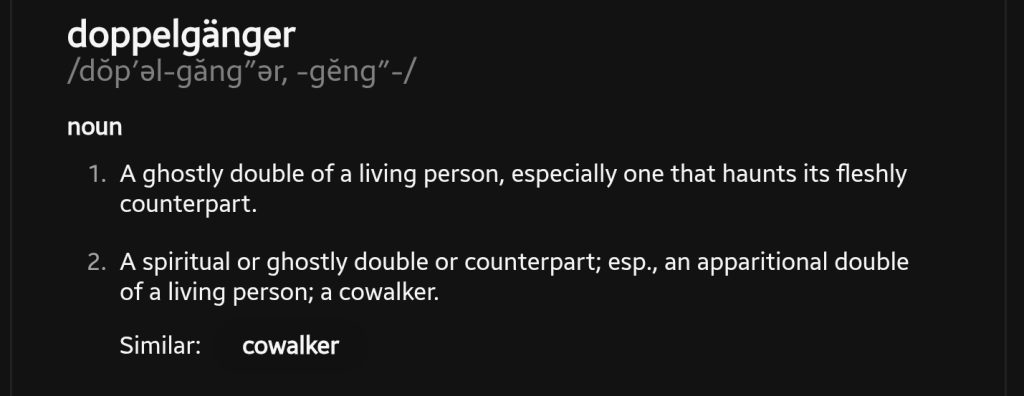
After stumbling upon Reddit posts discussing encounters that people have had with Doppelgängers, I found myself thoroughly fascinated with many of the details surrounding these stories and it got me to thinking that the Doppelgänger phenomenon might have certain similarities to the same types of interdimensional entities and parasitic lifeforms of which I’ve been recently researching and looking into. The creation and nature of some of these Doppelgänger entities also seemed to show clear parallels to aspects of particular types of psychic manifestation phenomenon, specifically relating to the pseudo Magickal procedure of creating what’s known as a “Tulpa” entity. A Tulpa is an “imaginary” helper or assistant commonly referred to as a “thoughtform” entity. Anyone can theoretically conjur a Tulpa into existence using soley the power of their own thoughts and the intention behind them. A Tulpa is usually made for the purpose of being one’s personal assistant, helping one come up with new ideas, to brainstorm with and to seek out for advice and insights on anything and everything. Utilizing them as an alterior personality construct of sorts that allows one to better compartmentalize and organize their own thoughts and expand on their creative intuitions.
How to Build Your Own Tulpa – REDDIT
The more you interact with and acknowledge the presence of the Tulpa, the more robust and powerful it’s footprint upon the physical world will become from the perspective of its creator. The progenitor of the Tulpa or “Tulpamancer” must constantly imagine this entity as always active and alive day after day and must continuously interact with it in order to perpetuate it’s status as the cogent conscious construct of a real individual. Actually genuinely believing in the individuality of your Tulpa is important in being able to successfully bring it into the world and keep it there. Often the Tulpa will stick around long after the person who created it wants them to and can torment them with their persistence in wanting to be near their creator at all times, as it requires an external lifeforce to sustain and perpetuate it’s existence.
To many this may sound like a silly excercise, but Tulpamancers report being amazed by the apparent autonomy, unique creative faculties and very apparent individuality of the persona that their Tulpa eventually is able to achieve and take on, all on its own. This “awakening” of the Tulpa can be a startling occurrence in its own right and could be construed as a type of intellect singularity event where the Tulpa has somehow been able to become conscious and aware and in some cases actually rebel and desire freedom for themselves. There have been Tulpamancers who have claimed that their Tulpa began to become disillusioned with the arrangement, defying attempts to continue to be used for the purposes of its creator, eventually “escaping” and vanishing completely from their lives. Very spooky stuff. How can a theoretical “thoughtform” suddenly crave independence and “run away” from the purview of your imagination? Where did it run off to? I suspect many of these rebellious Tulpas didn’t actually go anywhere but instead made themselves invisible while still siphoning off energy from the host in the darkness without them realizing the new arrangement.
Magick is very much tied to the power of the intent of the Magician performing a ritual or casting a spell. The creation of a Tulpa is by all rights technically a type Magickal ritual or practice by nature, though on the surface the actual process behind one manifesting a Tulpa does not necessarily resemble a traditional Magickal spell.
There have been reports by people who claimed to have unintentionally created a Tulpa by focusing too hard on wanting to have a friend or yearning for company for lengthy periods of time and then having a Tulpa suddenly appear to the person out of nowhere to their shock and bewilderment. It might sound like a tall tale to some but I can assure you that the phenomenon is quite real. I’ve even heard of college Professors who have tasked their students with creating a Tulpa as part of the coursework for the class. The students will purportedly get very real and often creepy results by the end of the semester. With their Tulpas reported to have even behaved in ways that startled and alarmed the students and assuming a modus of autonomy that shocked them to the core and downright frightened many of them. To the point that many of them regretted even having participated in the assignment at all.
I can’t help but wonder if some of these Doppelgänger entities are an iteration of Tulpa to some extent and have been manifested into our reality by certain dissociative tendencies or subliminal obsessions within the mind. Compounded thought patterns that required an outlet and were able to find one via the creation of the Tulpa as a means of the mind seeking out a place for these cognitive energetic frequencies to seek refuge in and inhabit or “possess”. Allowing the person to effectively exercise or ventilate these regressed emotions and thoughts, creating a completely separate identity projected out into an external location in the process. The Doppelgänger entity is anchored to the mind of the host and is a fragmented expression of their conscious essence. An emulation of all their subliminally inhibited personality traits, fears and any other aspects that might make up the unconfronted persona of that individual. Similar to an evil twin but really just more like a partial copy of yourself that consists of many of the darker subliminal and compulsive aspects of the psyche that have been shaped and stored inside the unconscious self and defined by the experiences of the individual. Individuals who harbor multiple personalities or suffer from split personality disorder would be more susceptible to having one of their suppressed personas manifest itself into a living Doppelgänger or Tulpa entity that might end up being sighted out in the real world.

“Twin Strangers” aka real people who happen to resemble one and other should not be confused with the type of Doppelgänger I am talking about: https://www.youtube.com/watch?v=L4jv1Vafpgo
In the movie “Empty Man” cult members perform a certain ritual that’s used to manifest “someone” into existence, creating an “Empty Man” which lacks a soul and was built by means of Black Magick and done so with evil intentions. A blank vessel who’s memories and consciousness were not their own and were instead contrived, thought up like a storybook by the ones who then carried out the ritual used to ultimately spawn this entity into our physical world. This ritual consisted of intent, sound in the form of chants and the supplanting of a tumultuous life backstory that was built on dark memories and that reeked of genuine sorrow. Sorrow always seems to be a powerful element and catalyst when cleverly incorporated into Magickal spells and rituals by the Magician, for reasons that I’ve never personally found to be very well defined at all but are still apparently very much true.
The cult members portrayed in this movie behind the manifestation of this “Empty Man”, created it in order to be used as a fresh vessel, needed for the use of an ancient and powerful non human, non physical entity of whom they worshiped.

They created this “Empty Man” for this creature to migrate into and live inside of after it’s previous host had expired after having been unable to continue enduring the immense power of the possessing parasitic entity after so many years.
The back stories used to construct the life memories of this “Empty Man” for some reason had to be dark and sorrowful in nature in order for the ritual used to create him to finally materialize this mostly blank, but still very much usable vessel they required for the entity that they all worshiped in this cult.
A parasitic entity doesn’t always necessarily have to assume complete physical control of the body of the host like the one depicted in “Empty Man”. Some of them could instead make their homes inside of the mind of a person without the individual being aware at all, or aware but not of the true nature of its presence. Failing to understanding that the symptoms they might be experiencing are being caused by an actual invasive living entity that’s burrowed itself inside the substrate of the light matrix that is their consciousness and that it’s not just a mere construct of their own subliminal volition.
Take people who suffer from schizophrenia who are told by the mainstream psychiatric establishment that their ailment is simply the result of the malfunctioning of their brain and a type of illness. Rather than coming to the realization that they are in fact the victim of an Alien mind parasite that has burrowed itself inside of their minds as a type of unwanted metaphysical tennant.
Could some of these same types of mind parasites which are said to be responsible for schizophrenia, also be using the power of the minds of their host to project and manifest themselves into our physical reality in the form of a Doppelgänger? Perhaps borrowing the conscious construct of that individual to temporarily impersonate the host in order to venture out into our physical three dimensional reality in the form of these evil manifestations? The parasite itself being the one responsible for the creation of these Doppelgängers which are used as a means of traveling between dimensional abodes, almost as a type of vacation in order to experience the frequencies of another world?
Doppelgänger are MUCH more common than most people might realize and you will find reports of them dating back to ancient times and up through the present.
WATCH: Face to Face With Your Doppelgänger ┃A Chilling Reddit Story | WATCH: People Share Creepy Stories Of Encounters With Doppelgangers | WATCH: Reality Glitches: Doppelgangers, Doubles and the Other You
Throughout the course of my research I’ve found that it’s quite rare for someone to run into their own Doppelgänger.

There are far more instances where the friends and family of the person will be the ones to encounter the Doppelgänger while out in public or in many cases inside the home that they might share with the person.
In fact it’s purportedly quite dangerous for anyone to confront a Doppelgänger and let them on to the fact that you’re on to them.
The very act of confronting your own Doppelgänger could end up being as nightmarish as it would be dangerous.
WATCH: Viral Doppelgänger Video?

The Doppelgänger usually is able to hide itself from the person it is mimicking, like in the case of French schoolteacher Émélie Sagée where all of her students and fellow teachers were able to see her Doppelgänger, but Emilee herself was never able to perceive it. This seems to be a rule of thumb for many Doppelgänger, though you can find instances where people will run into the mimick version of themselves while out and about and will often find it to be very stand-offish and hostile, clearly disinterested in interacting with the individual.
I’ve never heard of any friendly or even “normal” Doppelgängers of the ones reported to have been encountered directly by the familiars of the original person. The Doppelgänger in many cases will be completely non verbal and very antisocial, blankly staring ahead when questioned by anyone. They will often appear quite menacing in their appearance and give off terrible energy and will seem to make a point to act atrociously towards others, almost as if they are intentionally trying to create a bad reputation for the original person. They are said to be very akin towards one particular personality trait like being overtly sexual or hyper aggressive towards everyone they encounter. Almost as if they are governed by an incomplete and unbalanced consciousness that’s based upon a singular facet of the regressed subliminal emotional energies of the person.
Many Doppelgänger will appear and then dissappear very quickly. It seems that some of these Doppelgängers are only visible to certain individuals and may actually be projecting their image into the minds of only those who they want to be seen by. In the following video you can see that the camera did not detect the visual presence of the Doppelgänger but it was still able to move physical objects, opening the refrigerator and moving papers around on the counter, all while making itself visible to the man in the form of his daughter.
They seem to appear around certain times having to do with the person’s daily routine, hoping to mimick and blend into their life unnoticed. For example, a Doppelgänger isn’t going to show up at the family home at a time during the day when they should be at work. That will draw unwanted attention and possibly expose the many other obviously apparent differences between the Doppelgänger and the original person. So the Doppelgänger will show up say 5 minutes before the original person arrives home. Giving the Doppelgänger a full 5 minutes of access to the home without anyone suspecting anything wrong. There are countless “Glitch in the Matrix” stories that recount events where a wife for example will watch their husband enter the house, walk through the kitchen and go upstairs, then 10 minutes later watch that same husband walk through the door and do the exact same thing. The wife will run upstairs in a state of terror, thinking that there is an uninvited guest inside their house that is about to be run into, but there is never anyone else in the house. The first fake husband has dissappeared by then. Reality glitch or Doppelgänger sighting?
Now, there are surely some appearances of Doppelgängers that could theoretically be attributed to a shapeshifting entity of some kind like a Skinwalker. But for the purpose of this piece I have chosen to focus on the kind of Doppelgänger that are generated by different psychic “thoughtform” manifestation techniques and other types of metaphysical paranormal phenomenon possibly related to parasitic interdimensional entities or the side effects of split personality disorders.
The following excerpt was taken from “Émélie Sagée And Her Mysterious Doppelganger“:
…Emilie’s phantom twin kept showing up in increasingly bizarre ways. Students saw it standing silently behind her as she ate, moved, or talked. It would sometimes linger near her desk, even when Emilie wasn’t in the room. When she was feeling tired or weak, the double would seem more solid—like it was feeding off her energy.
Once, during a sewing lesson, Emilie got up to talk to someone. As soon as she left, her doppelgänger appeared in her chair—sitting motionless, like a mannequin. –https://www.maloriesadventures.com/blog/a-teacher-a-doppelganger-and-40-witnesses-the-strange-case-of-emilie-sagee
Émélie Sagée And Her Mysterious Doppelganger: A Maybe-True Story

Previously: Book Curses.
The Wikipedia page for “Émilie Sagée” is perhaps inaccurately named: Although the young woman in question is often identified with this name, the original source for her strange story identifies her not as Émilie, but as Émélie. No matter which spelling you use, however, the story that follows is always the same: It’s said that Émélie Sagée’s own doppelganger haunted her throughout her life.

What’s more, the strange tale of Émélie or Émilie Sagée is typically presented as true — or at least, as something that hasn’t fully been proven as not true.
[Like what you read? Check out Dangerous Games To Play In The Dark, available from Chronicle Books now!]
Whether you believe it or not will depend largely on your own personal stance on things of this nature: If you’re by nature somewhat skeptical, as I am, you’ll likely think it’s at best apocryphal; but, if you’re more inclined to believe in the supernatural, you’ll likely see plenty of evidence for its veracity.
Either way, it’s a fascinating episode — so let’s take a look, shall we?
A Teacher And Her Double: The Mysterious Tale Of Émélie Sagée’s Doppelganger
The story goes a little something like this:
In 1845, a new teacher arrived at a boarding school located in Livonia, in what is now present-day Latvia. Blonde (or perhaps chestnut — her hair color is sometimes described as both) and blue-eyed, she was 32 years of age, in good health and generally amiable, although sometimes anxious in disposition and a tad excitable. She hailed from the French city of Dijon. Her name was Émélie Sagée… or perhaps Émilie Sagée. Again, sources vary.
The school, usually identified as the Pensionnat of Neuwelck (“pensionnat” translating from French to “boarding school” in English; Neuwelck being the school’s location), was highly regarded as an educational institution; its students, of which there were 42 at the time of our story, were all young women from wealthy families counted among the nobility of Livonia.
Mlle. Sagée had been at the school for only a few weeks when… rumors began to circulate. Students talking among themselves would observe that they had just seen Mlle. Sagée in one room, only to have other students respond that this couldn’t possibly be the case, as they had just seen her in a completely different location of the school, often quite far from the first. These instances were easily dismissed, for a time… but then, other occurrences began to happen that were harder to explain.
One day, for example, when Mlle. Sagée was at the blackboard during a lesson, the 13 students in attendance swore that suddenly, they saw not one, but two Mlles. Sagées — two copies of their teacher standing right next to each other, each moving, writing, and gesturing in the same way, completely in sync with each other. The only difference was that one of them was holding a piece of chalk, while the other was not.
Another time, when Mlle. Sagée was helping a student hook the buttons on the back of her dress, the student caught a glimpse of her teacher in the mirror — except again, there was not simply one Mlle. Sagée, but two. The student, it was said, fainted clear away at the sight.

As time passed, however, the incidents became even stranger. Soon, these incidents were not limited simply to the appearance of a second Mlle. Sagée moving and behaving identically to the first; two completely different Mlles. Sagées began to appear, moving completely independently of each other.
Once, for instance, when Mlle. Sagée was ill with influenza, a student — the same student who had witnessed two copies of her teacher helping her dress — both saw Mlle. Sagée lying pale and still in bed, and up on her feet and pacing her apartment.
Strangest of all, though, was the time all 42 students witnessed Mlle. Sagée and her double perform feats which defied all logic or science.
On this day, the entire student population of the Pensionnat of Neuwelck were gathered in the great hall of the school’s main building, seated together at a long table and engaging in needlework and embroidery. The hall contained four large glass doors, which exited out to a garden. As the students worked, they saw Mlle. Sagée outside the doors, gathering flowers from the garden —
— and then, simultaneously, they witnessed Mlle. Sagée appear seated in an armchair vacated just moments before by a different teacher who had left the room.
In the garden, Mlle. Sagée gathered flowers. And in the hall, Mlle. Sagée sat quietly in an armchair.
The students observed two further oddities about the figures, however: The Mlle. Sagée in the garden, although still engaged in her flower-gathering, appeared to move more slowly than usual, as if she were half asleep; and — odder yet — the Mlle. Sagée in the hall was… insubstantial. Two students who dared to approach the seated double of their teacher found, when they attempted to touch her, that they felt only a slight resistance, not the hard stop one would expect when making contact with a solid human being — and, what was more, that they observed their hands passing directly through Mlle. Sagée’s seemingly non-corporeal body.
Eventually, of course, the stories about Mlle. Sagée moved beyond the walls of the school — and when the students’ parents began to learn of them, they one by one withdrew their daughters from enrollment, until only 12 students of the original 42 remained.
At this point, those in charge at the Pensionnat of Neuwelck determined they could no longer afford to keep Mlle. Sagée on. After just 18 months as a teacher at the school, she was dismissed from her position.
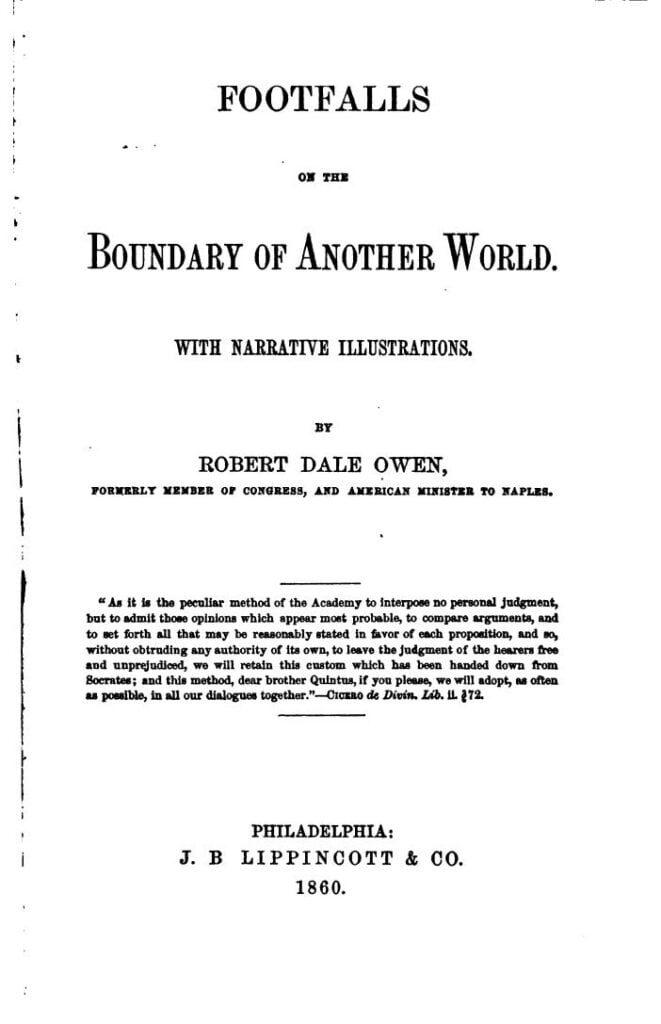
She was saddened, reportedly, but not surprised, for it had not been the first time she had lost a teaching position. All told, she said, she had taught at 18 schools, beginning at the age of 16 up through the present. She seemed herself never to be aware of her doubling, although it appeared to have been the cause of her dismissal each time; her employers were otherwise always pleased with her performance as a teacher, and yet she was never able to hold onto any single position for more than a year or a year and a half.
The Pensionnat of Neuwelck seems to have been her last teaching appointment, however. Following her dismissal, she resided for a time with her sister-in-law, whose young children also said they frequently saw “two Aunt Émélies”; then, reportedly, Mlle. Sagée departed for Russia, after which she passes out of the historical narrative.
Doppelgangers vs. Biolcation: Two Theories Of The Émélie Sagée Story
Two primary theories have been floated as to what may have been going on with Émélie Sagée and her mysterious double: One, that she was haunted by her own doppelganger; and two, that she was capable of bilocation, whether or not she was aware she was doing it whenever it happened.
First, doppelgangers:
What, precisely, a doppelgangers is — or, perhaps more specifically, what the appearance of a doppelganger might mean — varies depending on the tradition you’re examining; generally, though, they appear to be a double, duplicate, or copy of a living person, walking around independently of their original. Indeed, the word “doppelganger” itself translates literally to something like “double-walker” (from the German “doppel,” double, and “ganger,” walker or goer).
The “living” part is what separates a doppelganger from, say, a ghost or a spirit; even though a doppelganger might be insubstantial or non-corporeal, as demonstrated by the embroidery incident in the Émélie Sagée story, they’re still doubles of people who are still alive and walking around, rather than of those who might have already passed on.
Although the word “doppelganger” itself wasn’t coined until relatively late — its first known appearance is in the German novel Siebenkäs by Jean Paul, originally published in 1786 — the concept of the living double can be found throughout human history across the globe: As Tom Little wrote in his exploration of the history of doppelgangers for Atlas Obscura in 2017:
“In ancient Egypt, the ka was one aspect of the soul, depicted as a spirit identical to the body. Throughout Europe and parts of Africa, changelings were thought to be supernatural children left in place of human infants. The Norse vardøger was less ominous in nature, simply appearing in a place before the person it resembled, leading others to believe they had already arrived. English and Irish literature of the 18th and 19th centuries speaks of the fetch, an ethereal double whose appearance, like the doppelgänger, signaled death.”
I’ve also previously written fairly extensively myself about doppelgangers in Japanese folklore, namely in the form of the ikiryo — and, indeed, I’d argue that Émélie Sagée’s doppelganger is more in the vein of this kind of doppelganger than, say, a harbinger of death: Mlle. Sagée’s double seems to have behaved more as what I termed “the soul of a still-living person which has temporarily left its body and move about on its own.”
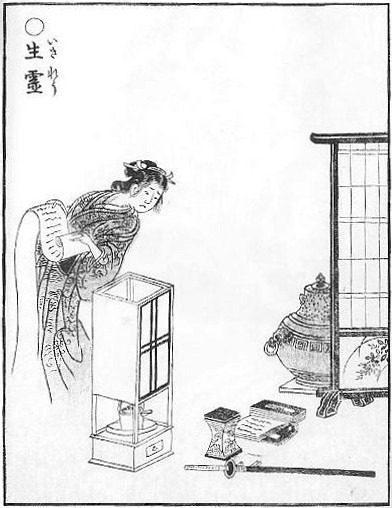
(This isn’t to say that Mlle. Sagée’s doppelganger was an ikiryo — wrong cultural tradition and all — but I think it’s worth noting that, although perhaps upsetting to those who witnessed it, the teacher’s double wasn’t inherently harmful or indicative of impending doom the way some other doppelganger traditions view it.)
Bilocation, meanwhile, refers to the ability of someone to appear in two places at once — or more than two places, in which case it’s known as multilocation. Whereas a doppelganger may move or behave independently of its original person, but may also simply copy their every move directly, the two versions of a bilocating person are usually described as behaving completely independently of one another (anecdotally, at least — that is, most stories of bilocation describe the phenomenon this way). Bilocation also typically has an element of distance involved: The different versions of a bilocating individual are usually said to appear in entirely different towns or cities from one another.
Bilocation most often comes up within religious contexts these days; a number of saints within Judeo-Christian traditions are said to have had the ability to bilocate (St. Padre Pio, for instance).
I find the bilocation interpretation of the Émélie Sagée story less compelling than the doppelganger one; the details of the tale — the fact that her double often (although not always) simply mimicked what she herself was doing; the appearances of the double occurring in relatively close proximity, rather than whole towns or cities away — fit the doppelganger mold much more cleanly than the bilocation mold.
But: That’s assuming the story is even true in the first place. And that’s an entirely different can of worms altogether.
Back To The Source: Questions Of Veracity
The biggest question is always this: Did the Émélie Sagée story really happen? And, well… we don’t know. What we do know, though, is that the sources, as earnest as they may be, are a little bit questionable.
The first time the story of Émélie Sagée appeared in print occurred in 1860 with the publication of Robert Dale Owen’s book Footfalls On The Boundary Of Another World. Owen, a politician and social reformer born in Scotland who spent most of his adult life in the United States, was active within the Spiritualist movement of the 19th century; indeed, in addition to Footfalls, he further published The Debatable Land Between This World And The Next in 1872.
Footfalls On The Boundary Of Another World is divided into six sections or books, each covering an aspect of the odd, unusual, and unexplainable. Each book is further divided into several sections, as well, addressing specific subsets of the subject matter contained within the larger whole. The tale of Émélie Sagée may be found under Book IV, “Of Appearances Commonly Called Apparitions”; the story itself, meanwhile — called simply “Why a Livonian school-teacher lost her situation” — is further filed under Chapter II, “Apparitions Of The Living.”
Owen claims to have recorded the story directly from one of the students at the school, who he identifies as Julie de Guldenstubbé; Julie was, Owen writes, the second daughter of Baron de Guldenstubbé, and was 13 years old at the time that Mlle. Sagée was her teacher.
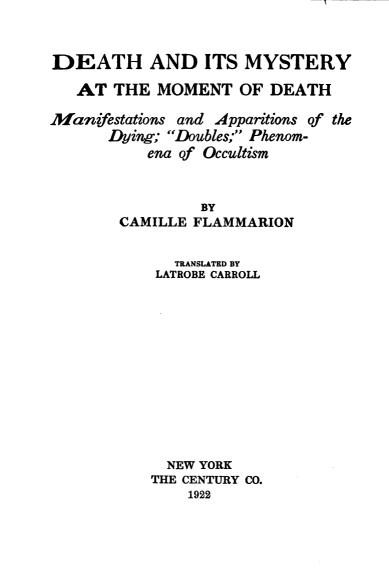
There’s some debate about who Julie was, precisely. The most likely candidate is Julie von Güldenstubbe, of whom there is actual record and whose family is known to have been active in the Spiritualism movement. (Her brother was Johann Ludwig von Güldenstubbe, who was known among Spiritualists largely for his study of table turning and automatic writing.)
However, Owen may have either gotten some details wrong or else intentionally obscured Julie’s identity; Julie von Güldenstubbe was born in 1827, meaning she would have been 18 at the time of her encounters with Émélie Sagée, not 13. Hence, the debate.
Either way, though, Julie was Owen’s only source for this story — and, indeed, is the only traceable source for virtually all versions of the story: The account in Footfalls is the account from which all other accounts derive, with the details remaining exactly the same and always traceable back to Owen’s book — either because Owen’s exact text was reproduced, as in an 1883 article in the psychical research magazine Light, or because the source is directly cited, as in Camille Flammarion’s 1921 book Death And Its Mystery.
Flammarion, for what it’s worth, built on Owen’s work by making an attempt to verify Émélie Sagée’s — or, rather, Émilie Sagée’s, as he uses the “i” spelling instead of the “é” spelling Owen went with — existence with actual birth or family records. In searching for a Sagée family living in Dijon at the time that Émélie would have been born (around 1813, given that she was said to be 32 in 1845), he came up empty; however, he did find records of a single mother with the last name Saget who gave welcomed a daughter on Jan. 3, 1813. The baby was named not Émélie, but Octavie.
Flammarion ascribes strongly to the theory that Octavie Saget’s name became, over the years, Émélie Sagée, whether by transmutation brought on by the young woman’s years of travel, by poor memory on the part of Julie, or by deliberate change on the part of the former teacher to escape her past. Personally, I think most of that is quite a reach; other than being the same number of syllables, I don’t share Flammarion’s opinion that the name “Octavie Saget” is “so like that of the teacher [Émélie Sagée] that it is difficult to doubt the identity.”
Regardless, in support of his theory, Flammarion also makes note of one other work he had encountered that repeated the Émélie Sagée story — a piece published in 1905 titled “La Mort et l’Au Delà,” or “Death And The Afterlife,” written by Charles du Prel — which refers to the teacher by the name Emilie Saget. I’ve been unable to locate this source, however, so I can neither confirm nor deny whether it exists, or what it may contain.
For what it’s worth, Flammarion does also write in Death And Its Mystery that he was acquainted with both of the von Güldenstubbe siblings in the early 1860s; he found them, as he puts it, “most sincere, perhaps a little mystical, but of unexceptionable integrity.” Flammarion does not, however, either outright state or subtly imply that he heard the Émélie Sagée story from Julie himself. Which, y’know, is interesting: He apparently only knew the story from what others had written about it, not from the original source herself.
In any event, although I think it’s worth pointing out that the sourcing for the Émélie Sagée is questionable, I don’t think Owen or any of the others who wrote about it at or around the time it happened were lying about it, exactly; however, I do suspect that the source (e.g. Julie) may have been a little less than reliable. And even then, Julie herself may have believed her own story, too — whether or not it actually happened the way she perceived it to have occurred.
But the upshot is the veracity of this story is, I think, always going to be somewhat suspect, unless we end up in a sort of Man From Taured situation.

So where does all that leave us?
Mostly with a curious tale to tell around campfires or on dark nights.
But be warned:
Even if your doppelganger, like Émélie Sagée’s, isn’t an evil twin or an omen of doom… it might still cause problems for you.
Best keep an eye on things for yourself.
You wouldn’t want to start seeing double, now, would you?
Further Reading:
Footfalls On The Boundary Of Another World by Robert Dale Owen. The original source for the Émélie Sagée doppelganger story. Originally published in 1860 by J.B. Lippincott & Co. in Philadelphia, the digitized version of it that’s currently available is part of the Harry Houdini Collection within the Library of Congress. The Émélie Sagée segment, “Why a Livonian school-teacher lost her situation,” may be found in Book IV, “Of Appearances Commonly Called Apparitions,” in the second chapter, “Apparitions Of The Living.”
The Debatable Land Between This World And The Next by Robert Dale Owen. Owen’s 1871 followup to Footfalls. Just, y’know, in case you’re curious to read more of his Spiritualist writing, as opposed to his political stuff or letters.
Death And Its Mystery by Camille Flammarion. Flammarion’s 1921 book featuring his continued investigation of the Émélie Sagée doppelganger story. This section is in chapter two, “Phantasms Of The Living.”
Dark Histories podcast, episode “Émilie Sagée, The Woman Who Wasn’t There.” If you prefer to listen to your weird history, rather than consume it with your eyeballs, the Dark Histories podcast put out a pretty terrific episode on Émélie Sagée back in 2018.
Doppelgangers and Bilocation on Wikipedia. Primers on both of these two phenomena. Useful, if bare — best used as starting-off points for further research (as is pretty much always the case with Wikipedia).
“Tracing The Development Of The Doppelganger” by Tom Little at Atlas Obscura. A history of doppelgangers as a concept. Little’s piece covers both literary and supposed real-life doppelganger incidents, underlining how much the idea of doubles and doubling have haunted humanity throughout… well, the entirety of our existence.
“Are Doppelgängers Real? Revealing The Strange Science of Seeing Double” by Sam Walters at Discover Magazine. Literary, folkloric, and supposedly supernatural instances of doppelgangers aside, there actually is some science behind lookalikes. Walters’ piece digs into both psychological explanations for doppelganger sightings and into genetic similarities that can make very real doppelgangers; additionally, I’d probably add that the science behind why we find doppelgangers so unnerving is likely to be adjacent to the uncanny valley: Rather than having something that isn’t human look too human, we’ve got someone who isn’t a person we know that looks too much like them. The same kind of valley is created, and it’s just as weird to experience.
Leap In The Dark, episode “The Fetch.” British supernatural anthology series Leap In The Dark isn’t super well known in my neck of the woods; indeed, a lot of it is considered lost media. (The entire first season outside the pilot, for instance — which originally aired in 1973 — is missing.) But! The third season featured an episode based on the Émélie Sagée story that’s still extant — and even watchable on YouTube. Called “The Fetch” (as in, the Irish folkloric double), it aired on Jan. 21, 1977.
The Devil’s Elixirs by E. T. A. Hoffmann. Want more doppelganger stories? Try this one. I do love me some Hoffmann; one of my favorite academic pieces I ever wrote was on “The Sandman.” Like “The Sandman,” The Devil’s Elixirs is an early Hoffmann work, having originally seen publication in 1815. It’s a classic doppelganger revenge story in many ways — that is, it’s an excellent lesson in why you should never frame your doppelganger for a crime you yourself have committed. Or, put another way: If you don’t own up to them, your own misdeeds will always come back to bite you in the end.
The Double by Fyodor Dostoevsky. Another literary doppelganger classic. Originally published in 1846, then revised and republished in 1866. Adapted into other forms many times, including in 2013 as the feature film The Double starring Jesse Eisenberg and Mia Wasikowska.
Related stories from The Ghost In My Machine:
- The Echo Test: Japan’s Doppelganger Phone Numbers And The Folklore Of Doubling. From 2020, my examination of the “doppelganger phone number” legend from Japan and its larger connections to the folklore of doubling.
- The Man From Taured, Solved: How A Real-Life Event Became An Urban Legend. In 2015, I came to the conclusion that the “true” legend of the Man from Taured probably wasn’t true at all. In 2024, however, I learned that it was true… sort of. How the actual event became the widespread legend, however, turned out to be quite the trip indeed. It’s possible that the Émélie Sagée doppelganger story could have followed a trajectory sort of like this, although I suspect that’s unlikely at the moment.
- The Most Dangerous Games: How To See Your Occult Twin. How to see your own doppelganger. Just, y’know… for funsies.
***
Follow The Ghost In My Machine on Bluesky @GhostMachine13.bsky.social, Twitter @GhostMachine13, and Facebook @TheGhostInMyMachine. And for more games, don’t forget to check out Dangerous Games To Play In The Dark, available now from Chronicle Books!
[Photos via Wikimedia Commons (1, 2, 4, 6), available under the public domain or a CC BY-SA 4.0 Creative Commons license; Internet Archive (3, 5)]
Discover more from Fringe Culture
Subscribe to get the latest posts sent to your email.





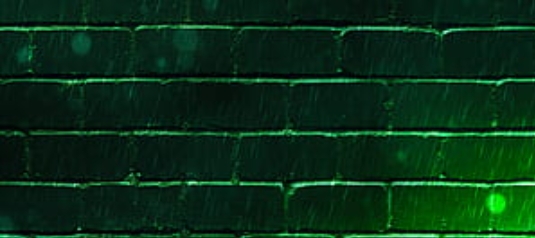


Leave a Reply